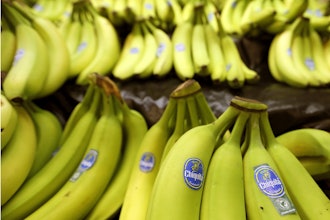Engineers Build Cheap Acoustic Levitator
Engineers at the University of Bristol have developed a 3D-printed acoustic levitator, a new (and easier) way to suspend matter in air. One day soon, you too could be levitating objects in the comfort of your own home. These engineers have democratized levitation.
Using the TinyLev acoustic levitator, the researchers have been able to levitate everything from Styrofoam, water, coffee, and paper to ants.
Now, we've seen levitating fish in China, and levitating pharmaceuticals at Argonne National Lab, but on larger, more expensive equipment.
These engineers used parking sensors, a motor driver, an Arduino and a 3D-printed base, and then they even released fairly easy to follow instructions on how to make it, so you can make one at home, school, or work.
Their hope is that by releasing the plans, people will explore interesting new applications for acoustic levitation.
Hollywood Crabs Have 3D-Printed Homes
The use of 3D printing in the entertainment industry has been around for a long time. The technology has been used in films since at least 1997 when it was used on The Lost World: Jurassic Park, but it really hit mainstream popularity when people found out that special effects experts were making custom parts for Robert Downey Jr.'s Iron Man suit in the original film.
So, it's no surprise that the technology has made its way to the smallest of animals on the small screen. Special effects company, Artem Ltd. used 3D printers to make more than 20 realistic miniature houses, and 10 shells for a new advertising campaign for UK-based Zoopla, a search engine for the real estate industry.
The company used the Stratasys Connex3 with multi-material, multi-color 3D printing technology to make these temporary homes for crabs during the shoot. According to Artem, it would've been otherwise impossible to achieve the level of realism required with conventional, hand model-making.
It was a tricky challenge, because the shells had to be realistic enough to be inhabited by the crabs without harming the talent. To get the natural shape, designers scanned real shells that were used to create the shell models out of Digital ABS material.
The shells were printed in less than a week, and were able to achieve pretty intricate details, like individual tiles and bricks. The crabs didn't get to keep the sweet digs though, they were evicted soon after the Hollywood machine had chewed them up and spit them out.
Waymo Patents Collapsible Car
Waymo, the self-driving car company that was spun off from Google, has patented a new car exterior that would collapse in an effort to protect pedestrians, animals, and other objects.
According to the Verge, Waymo's new patent consists of a car that is held together internally by "tension members,” like cables, that would adjust the car's "external rigidity."
According to the patent, the vehicle would identify and respond to a potential collision by altering the tension applied to one or more tension members, thereby altering the rigidity of the vehicle's surface. Which means that an impact with a pedestrian, animal, or another car would be far less severe.
The system would use sensors to detect the vehicle's surroundings, and processors that will not only determine if and when the collision is going to happen, but it would know how the tension members and rigidity should be altered before the accident.
We could one day see this new technology on the company’s autonomous vehicles.





















